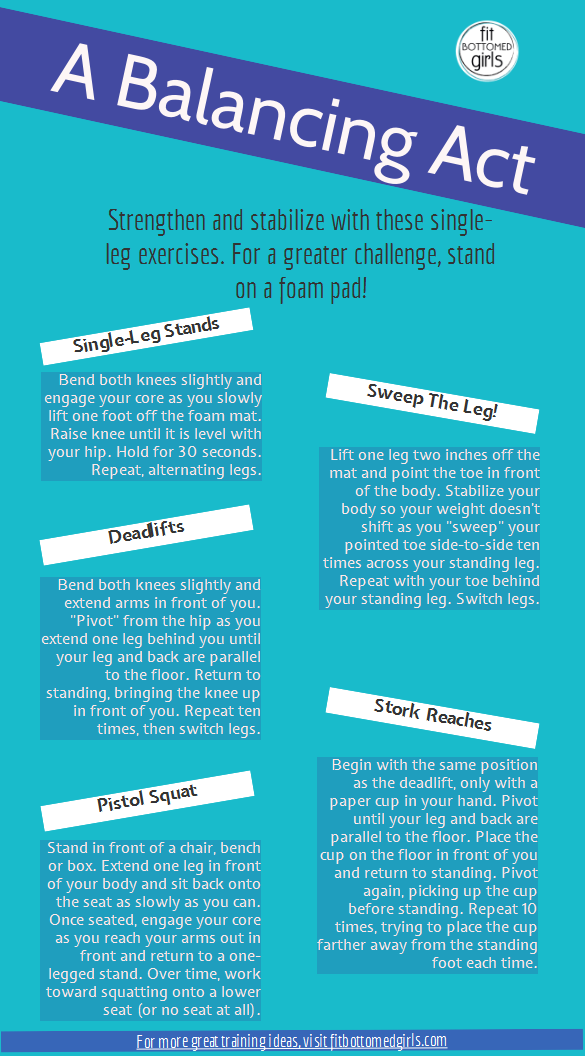Workout I Did: A Balancing Act
Let’s get one thing straight: I’ve never claimed to be “balanced” in any way, shape for form. In fact, I’ve always been a little off-kilter, and proud of it.
Until I was literally imbalanced. One of the things I’ve learned as I come back from ankle rehabilitation surgery is that my right leg (the one that didn’t have any work done on it) is a mighty, brawny limb, while the recovering left leg drags behind like a weak, impotent thing. I’m like the Prince Gerhardt Hapsburg of running (and if you get that reference without Googling it, I am totally giving you a virtual high-five you right now).
Many of us, even those of us who haven’t undergone major injury recently, have muscle imbalances without even realizing it. Chances are, you probably have a “dominant” leg — one that strikes the ground harder when we run or bears more weight than the other due to favoritism, form or vestibular issues. When one leg is working harder than the other, it can lead to increased fatigue, injuries and couch time — no runner wants that, right?
So how do we get back in balance? By becoming unbalanced. In other words, muscle imbalances can be corrected when you force yourself into situations where you have to stabilize your body. Single-leg strength training is a great way to do this. Though I’ve started by standing on a flat surface in my shoes, I’ve gradually progressed to doing these exercises barefoot (a great way to learn the importance of your foot muscles in maintaining stability), then graduated to doing these on a foam pad for even more instability.
Balance training doesn’t have to take a lot of time. It can be as simple as standing on one leg (preferably your “weaker” leg) while talking on the phone or brushing your teeth. But incorporating formal exercises, like the ones below, can really go a long way in creating a happier, healthier, more stable you.
The Basics of Balance
- Pay attention to your feet. Try to place equal amounts of pressure on the heel, ball of your foot and the pad beneath your pinkie toe. My friend Ashly, a Pilates instructor, calls this “the tripod.”
- If you’re falling all over the place, check your core. Your pelvis should be tucked in (think of it as a bowl of soup that you don’t want to spill) and your abdominals engaged.
- In these balance exercises, you should feel almost all the muscles in your standing leg, from your calves to your glutes, working equally to stabilize. If you feel like one particular muscle is slacking off (for me, it’s the hamstrings that are always out to lunch), stop your workout and “activate” the muscle by tensing it for 10 seconds at a time, then relaxing for five. Repeat this several times before you resume your single-leg workout.
- Breathe. No, seriously. Do it. Most people are so focused on staying upright, they forget to breathe. Holding your breath won’t help you at all.
Now, give this workout a try! Repeat each exercise 10 times — and that means 10 times on each leg when applicable!
Do you work on balance as part of your fitness routine? I’ve found it’s done wonders for helping my Gerhardt Hapsburg leg! —Susan

